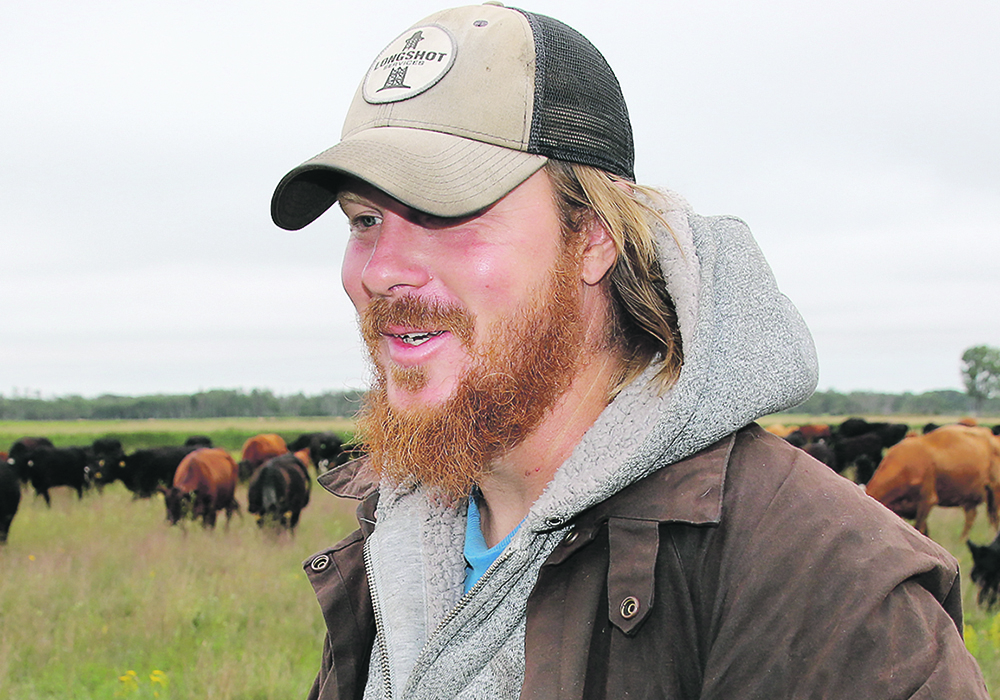Improving the Prairie: Hog manure and the canola-winter wheat-soybean-corn rotation helps boost soil organic matter
This story is part of an ongoing series that looks at how some farmers are attempting to preserve their land, water and natural habitat while increasing profits and stability.
EAST SELKIRK, Man. — A large, tracked tractor roars into the yard to fill up the tank it’s pulling with liquid hog manure.
A few minutes later it surges back out to one of next year’s corn fields to inject another load of fertility into the soil. After the corn is grown, it will be fed to the pigs in the 1,200 sow barn, providing them with nutrition that will produce manure for next year.
Read Also

Government, industry seek canola tariff resolution
Governments and industry continue to discuss how best to deal with Chinese tariffs on Canadian agricultural products, particularly canola.
“With the feed mill over there (in the yard), it’s pretty sustainable because the manure goes on the land, the corn goes on the bin here and (the grain) goes across the yard to the feed mill,” said Doug Martin on one of the last sunny days of early November.
Other stories in this series:
- Improving the Prairie
- For the love of soil
- Farmers often dare to experiment — and sometimes fail
- Farm diversifies while improving environment
- Sustainability called evolution, not quick cure
- Drought helps farm measure water impact
- Rancher aims to fit grazing system to the land
The agricultural nutrient cycle is a big part of the Martin farm, a fourth-generation operation northeast of Winnipeg. It’s got heavy clay soil and fights yearly with excessive moisture, which makes it typical of farms in Manitoba’s rich Red River Valley.
Like many similar farms, the Martin farm relies on tillage to cope with the combination of heavy residues and wet soil, but its quarter-century of commitment to growing winter wheat has allowed it to incorporate a measure of minimum tillage into its production system.
Canola crops are followed by winter wheat seeded into the canola stubble, covering the soil and spreading out the seeding and harvest work. The crop can be seeded in fall as the spring crop harvest is ending. It doesn’t need to be seeded in spring, alleviating the work during that time period, and it can be harvested in August when spring crops aren’t ready. The grain can be used either for cash sales or feeding livestock.
It’s been a good solution for Martin, but it is shared by fewer growers today than a few years ago.
“A lot of guys have given up on winter wheat because they feel the spring wheat yields have caught up,” said Martin.
The search for stability and sustainability takes many forms, with farmers in different areas and with different situations needing to find customized solutions to address the challenges to their soil, their water and the natural environment they live alongside.
Here, shelterbelts help keep some snow on the fields most years, while the winter wheat provides ground cover when it’s that crop’s turn in the rotation. Soil organic matter is boosted by the hog manure, and the canola-winter wheat-soybeans-corn rotation balances soil and pest concerns.
Including corn in the rotation has brought more wildlife onto the farm in the form of black bears.
“When you grow corn, there’s a bear in the field,” said Martin, whose farm is in an area with many trees and close to the forests that draw an end to the Prairies near here.
Deer are common, as are numerous species of birds. As on so many farms, skunks and raccoons have occasionally tried to take up residence in the farmyard, but that’s the sort of challenge farm dogs have embraced, and those pests stay away.
Martin grows the winter wheat for pragmatic agricultural purposes, but it’s also a crop greatly prized by wildlife conservationists. The crop allows many migratory species to nest and raise their young since winter wheat ground is not chewed up by spring seeding.
For him, anything that makes conservation-minded consumers happy is not just a plus, it’s probably going to be the kind of thing required by food companies that want to label their foods as environmentally friendly.
“It’s a small price to pay,” said Martin, who added that the hog industry has gone much further down the road in addressing consumer concerns than the grain industry has so far.
“They monitor everything you’re doing in that barn,” said Martin about hog industry certification.
“It’s part of what consumers want and there’s going to be more of it in the future.”
Consumer acceptability is probably going to be yet another complication to add into the sustainability formula, but it’s something he isn’t afraid of facing. The farm is already well down the path.
Operating a mixed farm is an increasingly rare thing in Western Canada, with most farmers swinging away from the mix of livestock and crops that once was the standard prairie farm. Many farmers find it difficult to excel at both livestock and crop production at the same time, so the industries have split into mostly dedicated one-commodity operations.
But Martin thinks the balance of livestock and crops still adds strength to the farm, making it more sustainable over the long run. Not only does the feed-manure-crop cycle create internal efficiencies, but unpredictable commodity price cycles are easier to manage.
“When I started farming there was no money in grain,” said Martin.
“You just could not cash-flow it. Hogs were where the money was.”
That hasn’t been true for most of the past 20 years, but Martin likes the hedged production system for the stability it brings. Having two distinct commodity classes produced on his farm, keeping some of the production in a supportive loop system, and protecting and preserving the land, water and habitat of the farm are taking him toward long-term sustainability, he hopes.


















